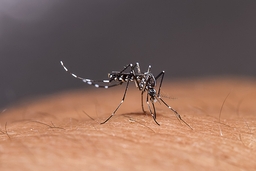Counteract the Stigma of Tuberculosis

"Tuberculosis is a major issue. However, the stigma (of this disease) persists," said Najwa Shihab, a media representative, in the "Free TB at Workplaces" talkshow. TB can affect anyone, even those who are well-versed in the disease. What TB patients really need during their recovery is support, not avoidance.
Tuberculosis (TB) is an ancient disease. It was first recorded in India around 3,300 years ago and in China, 2,300 years ago. In ancient Greece, tuberculosis was known as "phthisis." People referred to it as the "white plague" in the 1700s because the victims were deathly pale.
On March 24, 1882, Dr. Robert Koch announced the bacteria that causes tuberculosis. Mycobacterium tuberculosis. At the time, one in every seven people living in America and Europe died from tuberculosis. After a long search, the BCG vaccine was discovered in 1921.
Tuberculosis is an infectious disease
Mycobacterium tuberculosis usually attacks the lungs, but new research shows that it can also attack other parts of the body. The kidneys, spine, and brain, for example. TB is typically transmitted through droplets, such as saliva splashing when sneezing or coughing.
Following an infection, two conditions may develop. TB disease occurs when the immune system is unable to resist the bacteria's activity; and latent TB infection occurs when the immune system is strong enough that the infection does not cause symptoms or illness. Latent tuberculosis infection can progress to tuberculosis disease if the immune system is unable to completely eliminate the bacteria.
Tuberculosis symptoms vary depending on the organ infected. Lung tuberculosis typically begins with coughing for three weeks or more, chest pain, and coughing up phlegm or bleeding. Other symptoms include fatigue, weight loss, loss of appetite, cold sweats, and fever.
Malnutrition, HIV infection, smoking, and diabetes are all risk factors for tuberculosis. Even if you have been vaccinated, make sure your immune system is always strong, especially when you have an excessive workload. Pregnant women should exercise caution! If there is a history of contact with TB patients, get a thorough examination.
Tuberculosis management is worsened by the COVID-19 pandemic
The WHO reports that the COVID-19 pandemic has hampered TB diagnosis and treatment. The global goal was not met. Despite the fact that Indonesia is one of the top three countries in terms of incident reduction, the global TB burden continues to rise.
There were nearly 969 thousand cases of tuberculosis worldwide at the time this article was written. 144 thousand people died as a result of them. According to the WHO report, the majority of TB patients are adults (90%), with men outnumbering women.
The Minister of Health of the Republic of Indonesia, Budi Sadikin, said he expected there would be around 824,000 TB cases. Without proper treatment, TB can cause death (50%)—especially if the sufferer also has HIV/AIDS. Therefore, he asked that 90% of this amount be detected in 2024.
The Minister of Health also proposes a good and correct surveillance strategy, i.e., by name and by address, just like when recording COVID-19. With the new protocol that has been created by the Ministry of Health and Global Fund funds, he hopes that TB detection will be the main focus until 2024.
The COVID-19 pandemic has hampered the health system's ability to provide TB services. Particularly when regional quarantine (lockdown) and PPKM are used. Aside from concerns about COVID-19 transmission, the stigma associated with the similarity of symptoms between TB and COVID-19 haunts the community.
The TB stigma must be removed

Stigma affects a person's outlook and discourages them from getting tested. As a result, finding new cases becomes more difficult. The patient's condition will deteriorate because the stigma prevents the patient from exercising his or her right to health care.
Take a look at the following illustration!
Budi works for company X. He works so hard that he forgets about his health. He initially coughed. After a month, his cough worsened, his chest hurt, and he became thinner. Budi's coworker joked that he might have tuberculosis. The joke, however, appears to keep the others away from Budi. They are afraid of becoming infected, as well as being shunned and fired. Budi is reluctant to be examined due to environmental factors. Finally, he developed tuberculosis, which made the healing process even more difficult.
Budi's environment subjected him to two treatments: stigmatization and discrimination. His colleagues may label him "sick" or "bad luck," so he should be avoided. This behavior provides no benefit and must be stopped for the sake of patient recovery and the greater good.
Enriching knowledge, implementing a clean and healthy lifestyle, and assisting in the education of local people are all ways to combat the stigma. The main cause of stigma is a lack of information and education.
Several policies designed as advocacy tools have been developed by the Indonesian government to counteract the stigma associated with TB. For example, Article 12 of the Draft Presidential Regulation on Tuberculosis: "Every TB patient undergoing treatment has the right to be protected from stigma and discrimination related to their disease."
If the Indonesian government is committed to achieving TB elimination with a target of 65/100,000 new cases and 6/100,000 deaths from TB, we must also support it by doing what we can. Participating in policy implementation, for example. In addition to this, take care of yourself and those around you.
TB is a lethal disease. It is, however, preventable with the BCG vaccine and good hygiene. TB can also be cured by handling and administering anti-tuberculosis drugs for 4-6 months. It is also critical to provide assistance in order to lighten the load.



